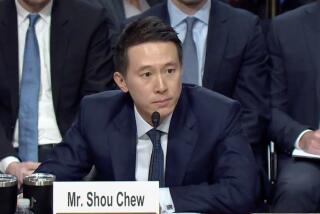China grapples with mass migration from villages to cities
It’s been called the largest migration in human history: An estimated 320 million Chinese will leave small villages and rural counties to start new lives in cities over the next decade and a half.
It’s the equivalent of everyone in the United States packing their belongings and changing addresses.
Urbanization is the linchpin to China’s development. It raises standards of living and encourages residents to become consumers.
But as Tom Miller describes in his upcoming book, “Urban Billion” (Zed Books), the process thus far has been messy and uneven.
Pollution is choking Chinese cities. Breakneck growth has sapped urban areas of their character. Millions of new city dwellers work at low-wage jobs and don’t have access to social services.
“Simply moving a farmer into a flat does not make him an economically significant consumer,” writes Miller, the Beijing-based managing editor of the China Economic Quarterly. “On the contrary, if policymakers do not extend social welfare to migrants and fail to integrate them into the urban economy, greater urbanization could merely create a gargantuan urban underclass.”
In an interview with The Times, Miller, 32, said the government’s urbanization plan was guided by a “sense of duty to create better lives.” But to be successful, planners will have to abandon the notion of growth for growth’s sake and pay attention to building a more livable environment that gives residents access to public education, clean air and affordable housing.
Question: Why does it often seem like modern Chinese cities are designed without consideration for the people who live in them?
Answer: There’s a rough-and-ready quality to Chinese cities, which some people find quite attractive. Most ordinary people would think they are pretty darn ugly, with enormous roads and big, boxy buildings clad with bathroom tiles. There’s no sense at all of aesthetic, or the aesthetic they have is often brutish. For the most part it’s all a question of function rather than design. One of the original reasons for this goes back to Soviet design, which has to be functional and aid social control.
Chinese cities also suffer from gigantism. There’s this obsession with being as large as possible. That’s because Chinese officials making planning decisions get promoted for pushing economic growth above all else rather than providing public good and making people’s lives better.
Q: But growth is also undergirded by significant demand.
A: China has had to house over 20 million new urbanites every year. There’s also huge demand in China to upgrade to something decent. Until 10 years ago, very few people lived in property with their own bathroom. You’d be lucky to have your own tap for water.
The sheer numbers of housing needed means you have to build very, very fast. It’s a matter of satisfying demand quickly rather than satisfying quality or design.
Q: Will Chinese people begin demanding more livable cities?
A: As people get richer, they can handle a certain amount of pollution until they reach a level. You saw that in London and you saw that in L.A. When you get fed up, you demand a better living environment. Then the government will have to react. I think you’re seeing that happen in Beijing right now. We’ve had terrible pollution in the last year and it’s much more in the public consciousness. That and traffic. People are coming around to the fact that growing really fast without worrying about the consequences doesn’t necessarily produce a nice living environment.
Q: Are planners following the correct model to build their cities? Are they in danger of making the same mistakes as the West?
A: China has nearly one-fifth of the world’s population and only 7% of the world’s arable land. It makes no sense for China to follow a U.S. model. It has to go with concentrated living because it doesn’t have the available land for people to have their own house and their own yard.
A lot of my American friends come to Beijing and say it looks like a city in the Midwest because everything is so spread out and big. Cities are sprawling in China, particularly Beijing, which has been built around a car economy. Beijing is an example of how not to do things.
Q: At the same time, more than 30 cities will be adding mass-transit networks in the coming years.
A: One thing China does well is infrastructure. Whatever you may think of the financing behind it, they’re very good at building stuff, and this is the biggest subway building boom the world has ever seen. And it’s absolutely necessary. It’s the only possible way of moving people around.
Q: Urbanization won’t work without proper social services. What’s being done about that?
A: China has already started to weave its social security net. It’s at a very early stage. On a per-capita basis, it’s puny. But the point is you have to start somewhere. China probably looks like Britain in the late 1940s after the Second World War. But you’re talking about a much bigger country and much higher cost.
Q: How does this impact people on the other side of the world?
A: Clearly, whether China’s cities are ugly or not doesn’t matter if you’re sitting in Beverly Hills. But you might be interested in how a billion people live.
More directly, it impacts climate change and commodity prices. China has to import most of the raw materials it needs to build these cities. It’s very important if you’re Brazil or Australia exporting iron ore to make steel. It’s important to America in terms of exporting soybeans [for animal feed] because as more people move to the cities they start eating a lot more meat.
It also has an impact on gasoline pump prices. More people in China are going to buy cars and drive up the cost of oil.







